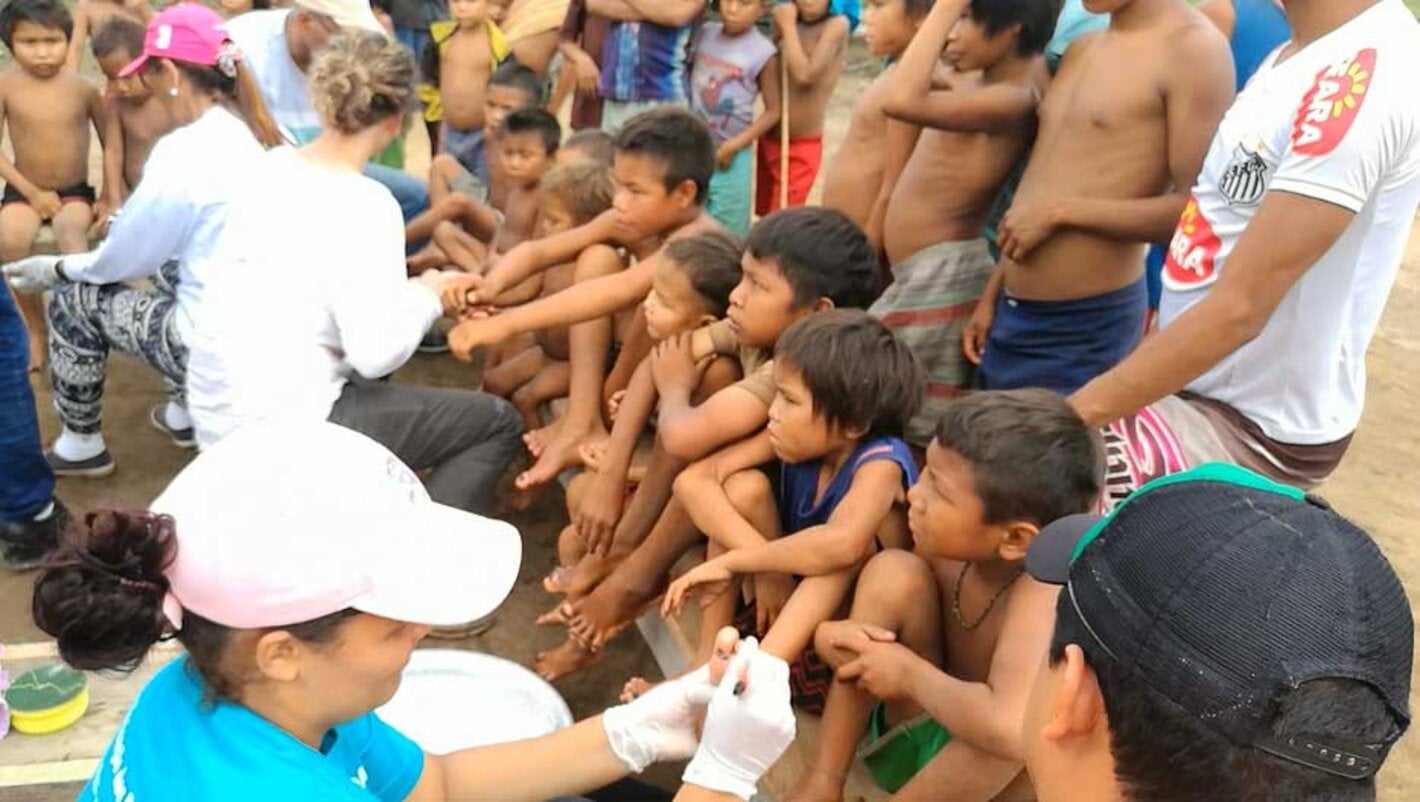
Indigenous health authorities of the Yanomami area in Boa Vista, Roraima State in Brazil, and the Secretary of Indigenous Health of Brazil contacted the PAHO office in Brazil requesting support to attend an unusual increased number of tungiasis cases in indigenous population Yanomami and Yekuana of communities bordering Venezuela. (Photo Credits: Dr. Hollman Miller)
A technical mission was carried out to the communities affected in May 2018. The aim was to assess the tungiasis situation in two communities, and train local health workers on control interventions. Because of the high number of cases found during the mission, including severely infected cases, a clinical intervention was immediately done to alleviate suffering and pain of people affected. Thirty-six cases were treated in two days. The most infested were children, people with physical impairments and mental health problems, and elderly.
Some risk factors observed during the mission were related to the living conditions mainly in the households: dirt floors, low ventilation and illumination, wood stoves inside the households, hammocks to sleep hanging very close to the ground, limited hygiene practices, etc. The local indigenous health authorities of the Yanomami area pointed out that occurrence of tungiasis cases has been going on for years in this communities, and it was unclear if this specific situation constitutes higher infestation than usual. It is known that in tropical environmental conditions, thee life cycles coexist: human, domestic animals, and sylvatic cycle. In households without a solid floor - common in resource-poor settings- the sand flea's whole life cycle can be completed indoors.
Cases were treated with a product that is applied to the skin and blocks the respiratory system of the flee which then dies. Antibiotics were needed to treat associated secondary infections. Health local workers were instructed to continue visiting other communities where they have reports of tungiasis to treat cases, as well as on the interventions to reduce infestation in households.
An integrated intervention is needed in the area to reduce immediately the intense transmission these communities are experiencing. This should include control of larval cycle in the house and treatment of reservoir (human and animal) followed by maintenance activities with the direct involvement of the community. Assessment of the epidemiological situation including delimitation of the area and number of people affected, environmental conditions related to the transmission, cycles linked to the occurrence of tungiasis, among other factors, should be completed soon. This will facilitate to identify the more suitable interventions in these specific settings.
Tungiasis epidemiological assessment needs to be also done in other areas of Brazil as well as in other countries in the Region of the Americas to understand the extension of the problem. This disease predominantly affects marginalized populations, and is a disease of the poorest of the poor. Sand flea disease causes chronic pain, immobilization, disability, and disfigurement, ending in mutilated feet responsible for the characteristic gait seen in heavily affected individuals.
Tungiasis is a parasitic skin disease caused by the penetration of female Tunga penetrans or Tunga trimamillata fleas into the skin. Sand flea disease was included as one of the neglected infectious diseases in the Resolution CD55.R9 approved by the Directing Council of PAHO in 2016 as part of the group of diseases for which assessment the regional epidemiological situation should be done.



